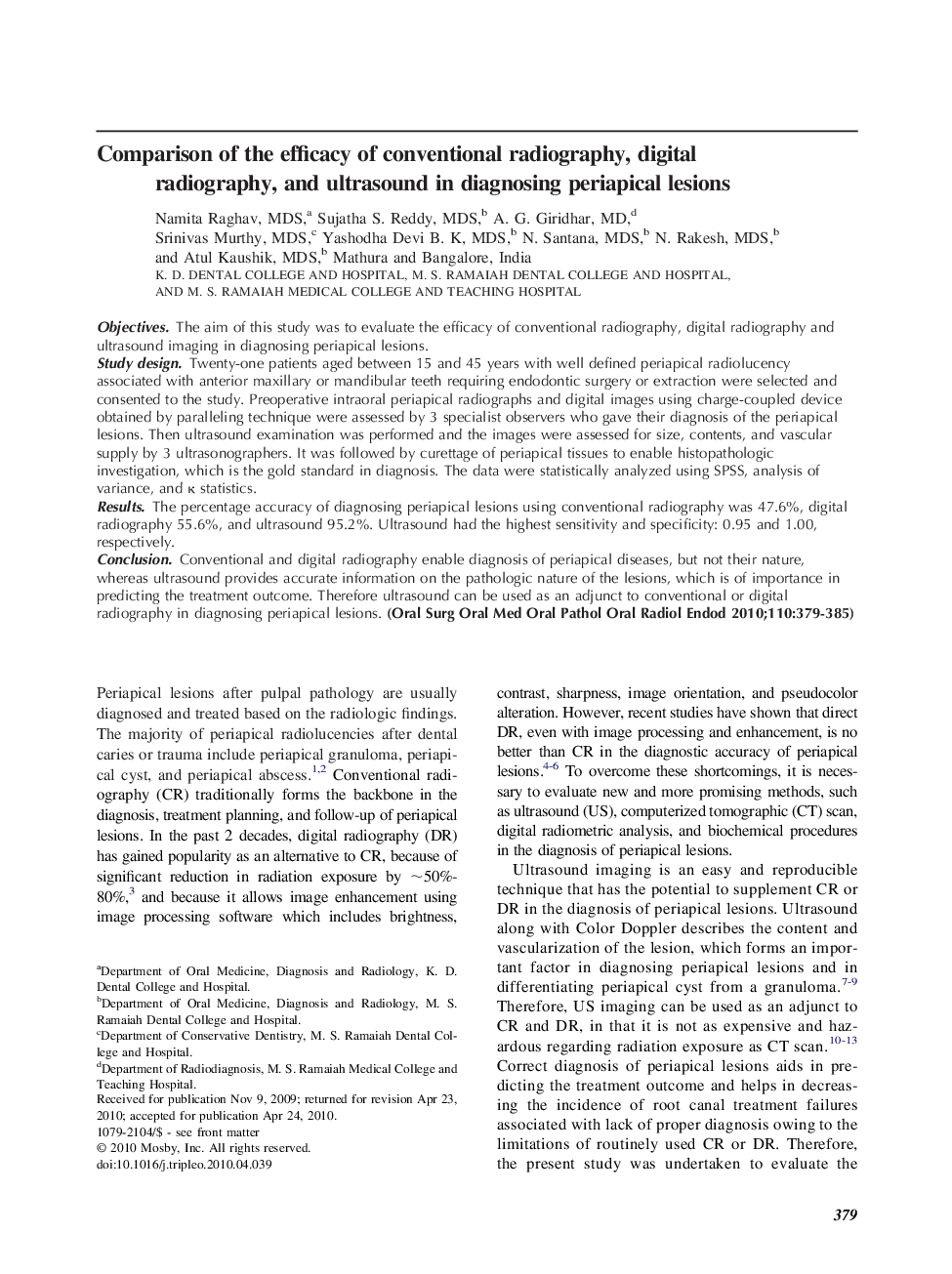| Article ID | Journal | Published Year | Pages | File Type |
|---|---|---|---|---|
| 3167429 | Oral Surgery, Oral Medicine, Oral Pathology, Oral Radiology, and Endodontology | 2010 | 7 Pages |
ObjectivesThe aim of this study was to evaluate the efficacy of conventional radiography, digital radiography and ultrasound imaging in diagnosing periapical lesions.Study designTwenty-one patients aged between 15 and 45 years with well defined periapical radiolucency associated with anterior maxillary or mandibular teeth requiring endodontic surgery or extraction were selected and consented to the study. Preoperative intraoral periapical radiographs and digital images using charge-coupled device obtained by paralleling technique were assessed by 3 specialist observers who gave their diagnosis of the periapical lesions. Then ultrasound examination was performed and the images were assessed for size, contents, and vascular supply by 3 ultrasonographers. It was followed by curettage of periapical tissues to enable histopathologic investigation, which is the gold standard in diagnosis. The data were statistically analyzed using SPSS, analysis of variance, and κ statistics.ResultsThe percentage accuracy of diagnosing periapical lesions using conventional radiography was 47.6%, digital radiography 55.6%, and ultrasound 95.2%. Ultrasound had the highest sensitivity and specificity: 0.95 and 1.00, respectively.ConclusionConventional and digital radiography enable diagnosis of periapical diseases, but not their nature, whereas ultrasound provides accurate information on the pathologic nature of the lesions, which is of importance in predicting the treatment outcome. Therefore ultrasound can be used as an adjunct to conventional or digital radiography in diagnosing periapical lesions.
